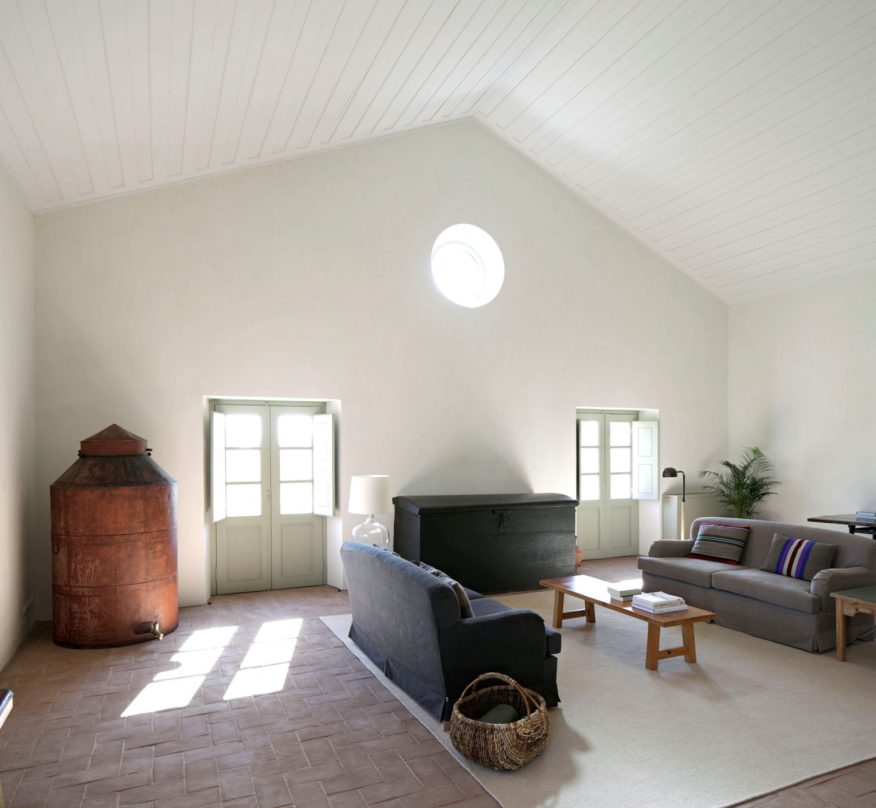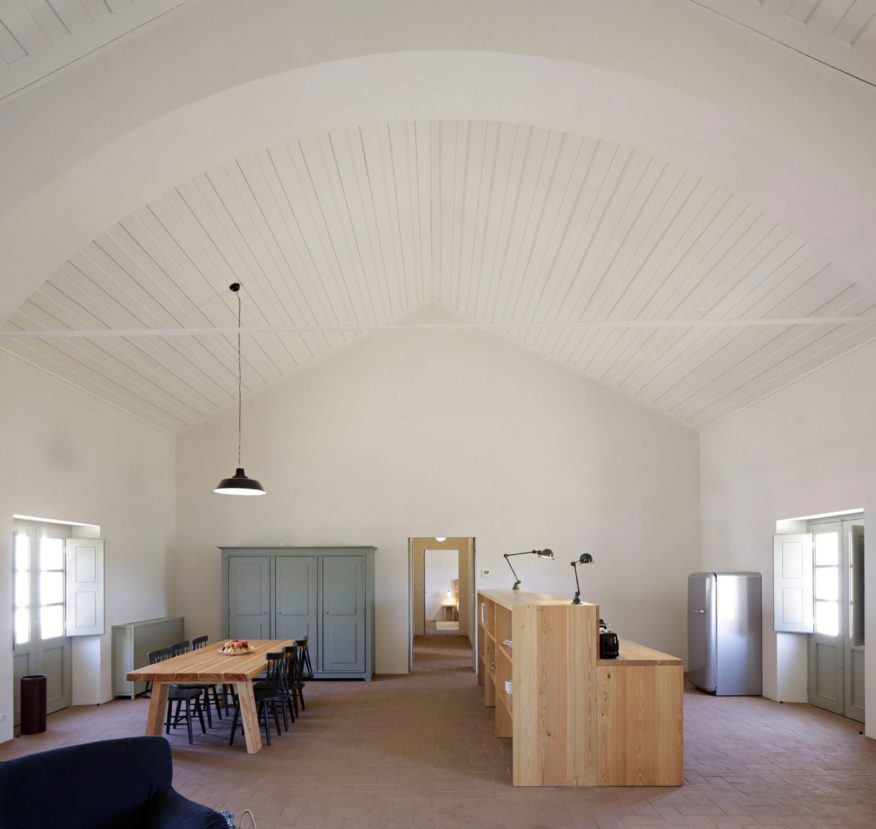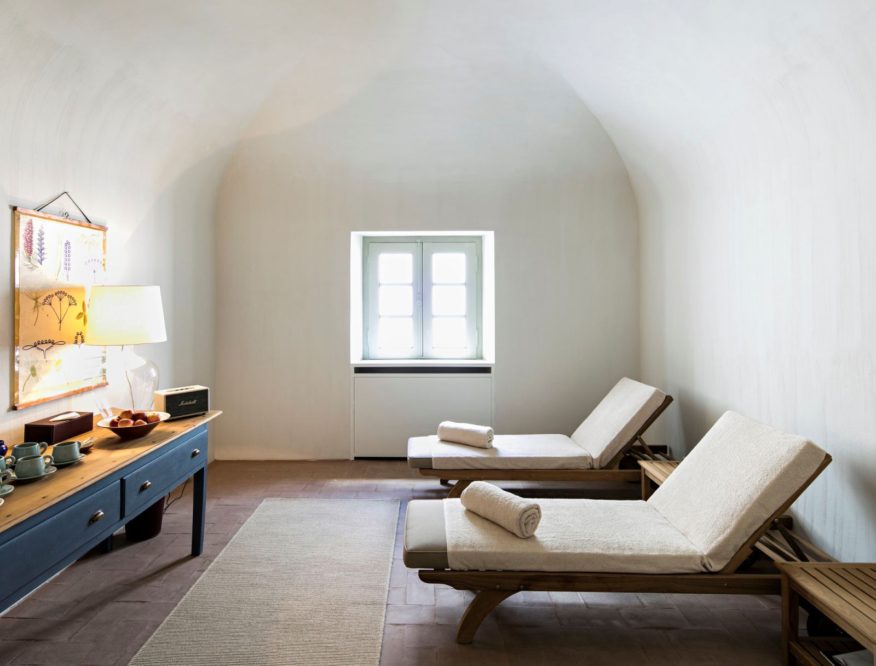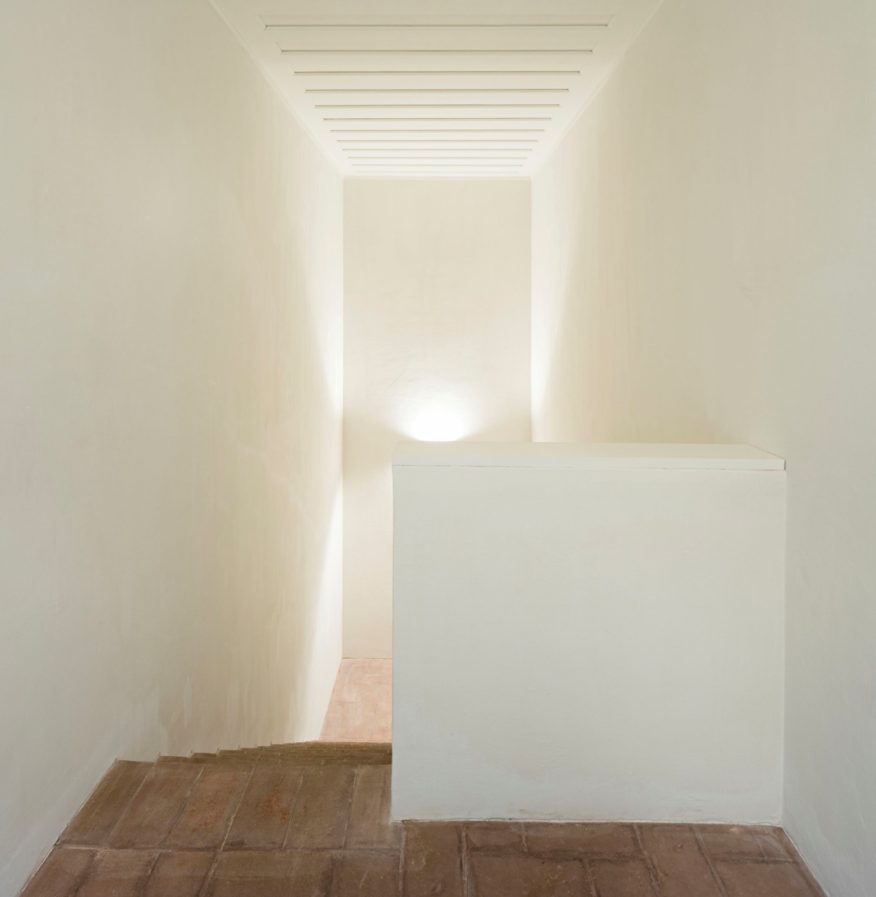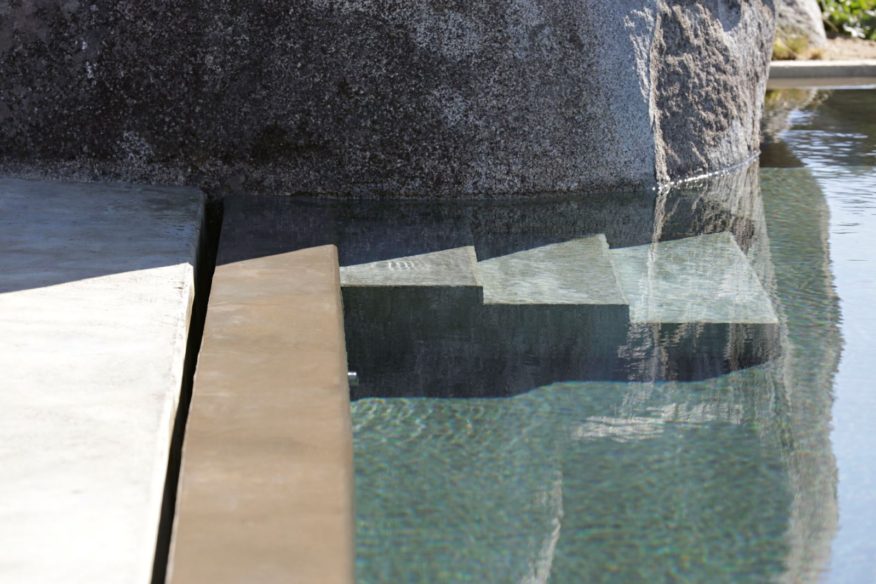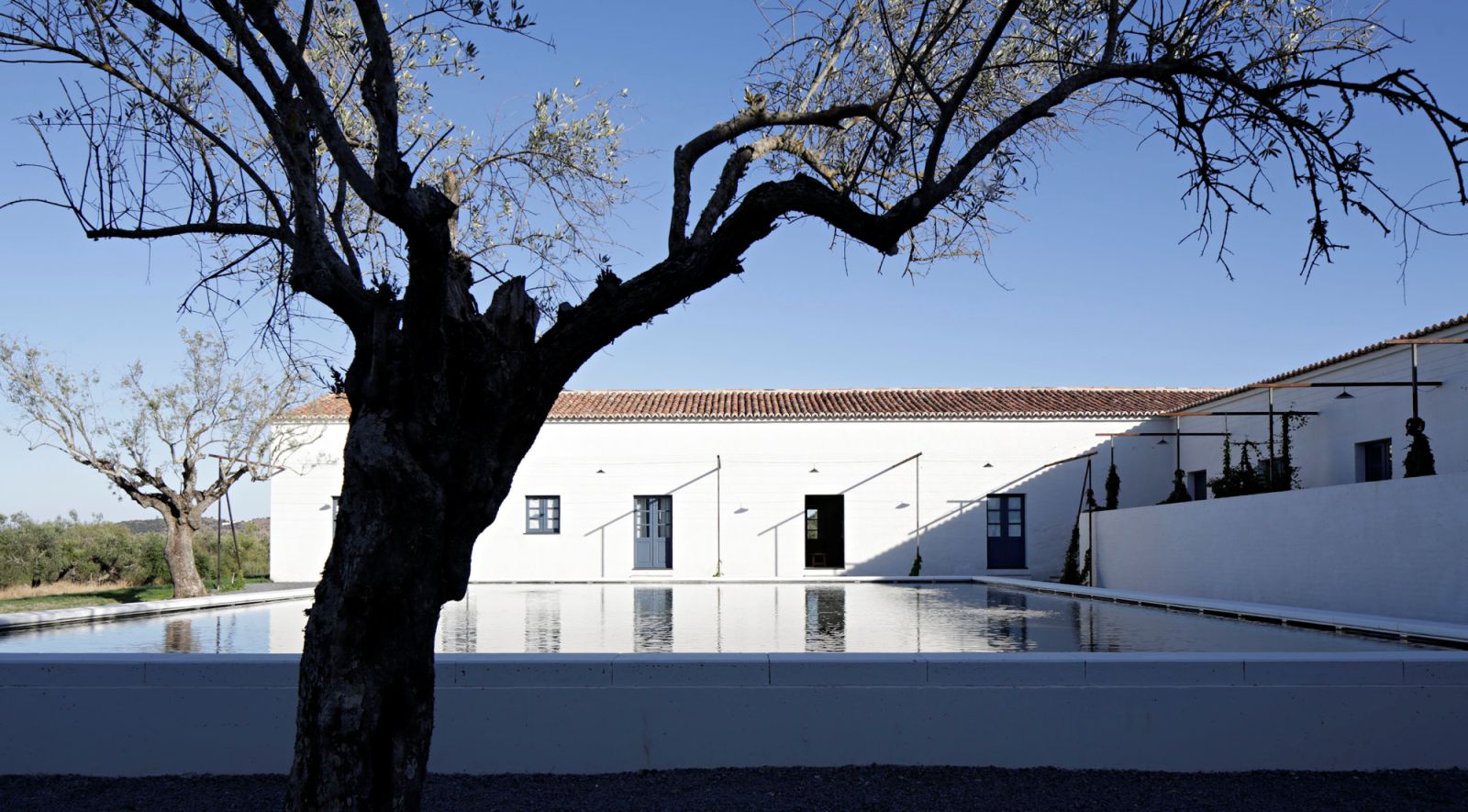
The Monte has a core characterized by 7 buildings implanted along a central street, which defines two main sets (North and South). The North complex, with an area of 4.144 m², consists of 2 buildings: the old industrial and officinal building and the storehouse for the farming tools.

The South complex consists of 5 buildings: the main house, the agricultural pavilions, the dovecot, the kennel and the pigsty, with an area of 3.810 m². Further south, the vegetable garden area comprises 20.333 m², including the old vegetable garden keeper’s house, with an area of 34 m², and the outdoor pool that keeps a firm hold of a granite outcrop (barrocal).

In conversation with Eduardo Souto de Moura: “The first thing that struck me as soon as I arrived was the ambience of this property, which is hard to find. Everyone knows that Alentejo is very beautiful, but I wasn’t expecting to have a prehistoric heritage like this.

What is unusual in Alentejo is to have water on the edge of the property – the famous Alqueva Dam and the views of Monsaraz which is lovely from the outside in. This is not just a house. This is truly a mini-universe, a village. It has its own hierarchy: a street, a square, outbuildings, cloisters. This is what we rarely find in such good condition.

Everyone knows that each historic development is unique and Barrocal is a difficult but very interesting project because we are working on the razor’s edge. If we go too far, we’ll spoil it, and if we don’t do enough it won’t work. The main question here is starting from a position that is theoretically very interesting but actually very dangerous in practice – but it’s the only way.

The only way to preserve heritage is to live with it and use it, even if it is damaged in some places. Because only everyday life transforms it into something natural and gives it heritage status. What’s fascinating here is the change in usage. A building might be created for a particular purpose, and then evolve to meet different, contemporary needs.
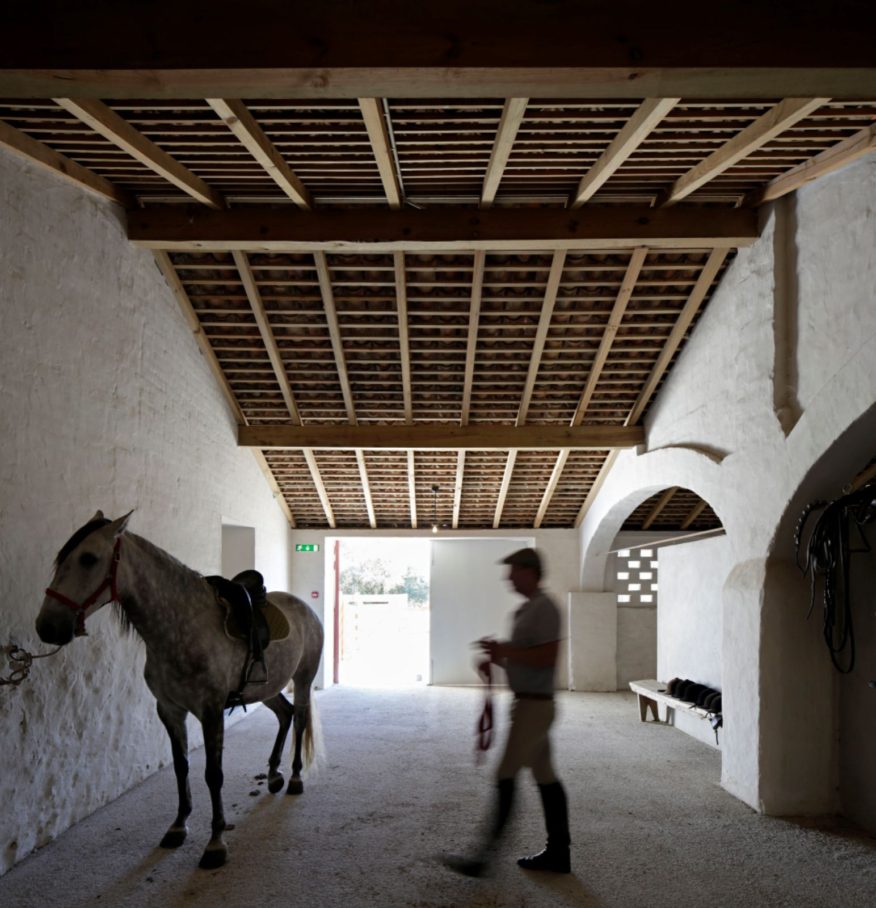
There is a process that is very absorbing finding out how an olive press, for example, can become a place for a living room with a bar, how agricultural outbuildings can be made into houses, and how a cowshed can be made into a restaurant. This change in use needs hardly any intervention at all.
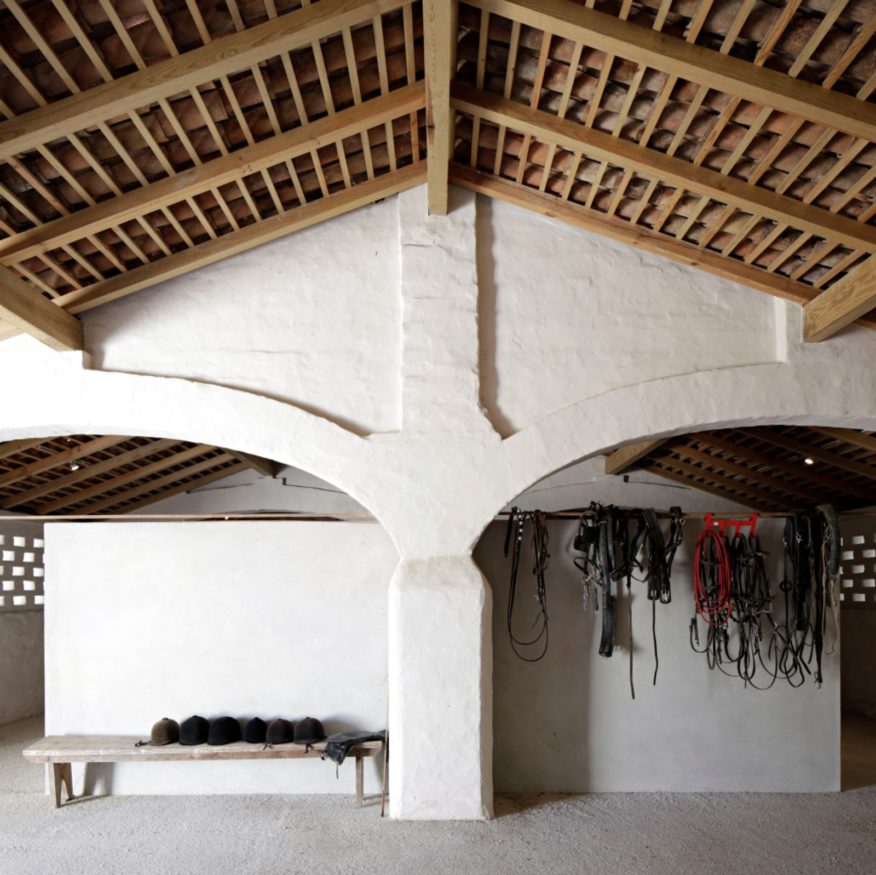
The challenge is how architecture will responde.I think that people’s first impression will be that they feel at home here, even if they have come just to relax. One is going to read, another is going to write a thesis, another is here for a holiday.

People will run into each other and they will go off to buy bread or the paper or they will go out for dinner. They will run into each other and after a few days there will be a connection. I think it is important to form a kind of community.
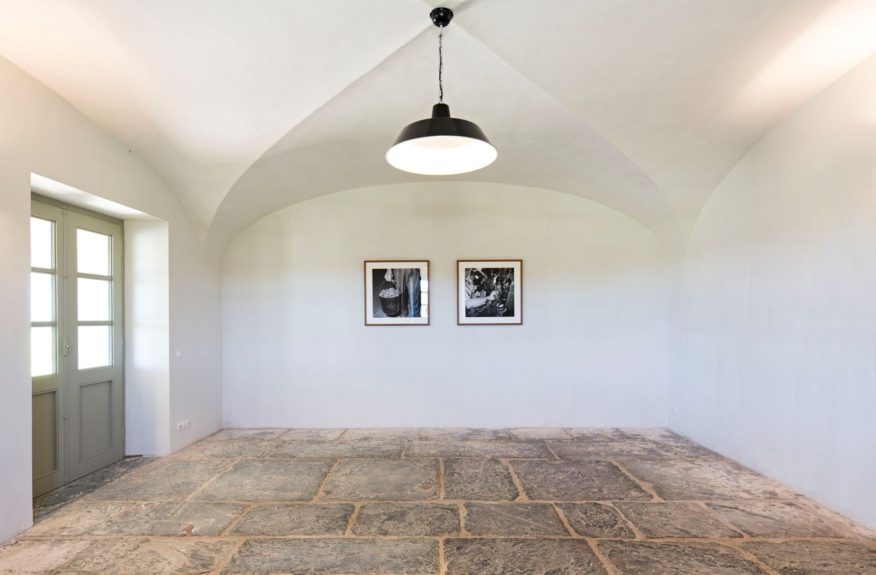
But a fleeting community, because that’s the way it’s designed. Except that the people will have changed. It won’t be the workers anymore, it will be these people drawn from far beyond the monte. Source by Nelson Garrido.

- Location: Monsaraz, Alentejo, Portugal
- Architect: Eduardo Souto de Moura
- Interior Design: AnahoryAlmeida
- Landscape Architect: João Gomes da Silva
- Project Engineering: Afaconsult
- Estate’s foundation: 1820
- Farming village (Monte) establishment: 19th century
- Client: São Lourenço do Barrocal
- Estate’s area: 780 hectares
- Area: 13.524,5 m2
- Site plan area: 13.019 m2
- Farming village (Monte) total area: 37.175 m2
- Completion: 2016
- Photographs: Courtesy of Nelson Garrido

